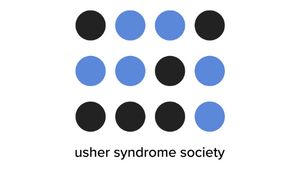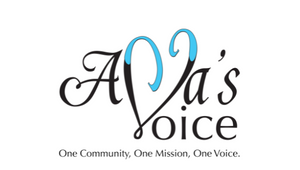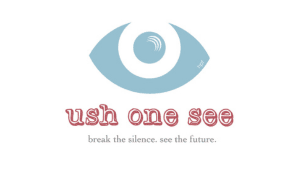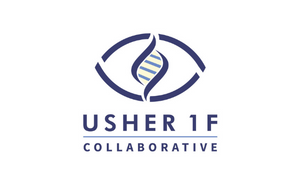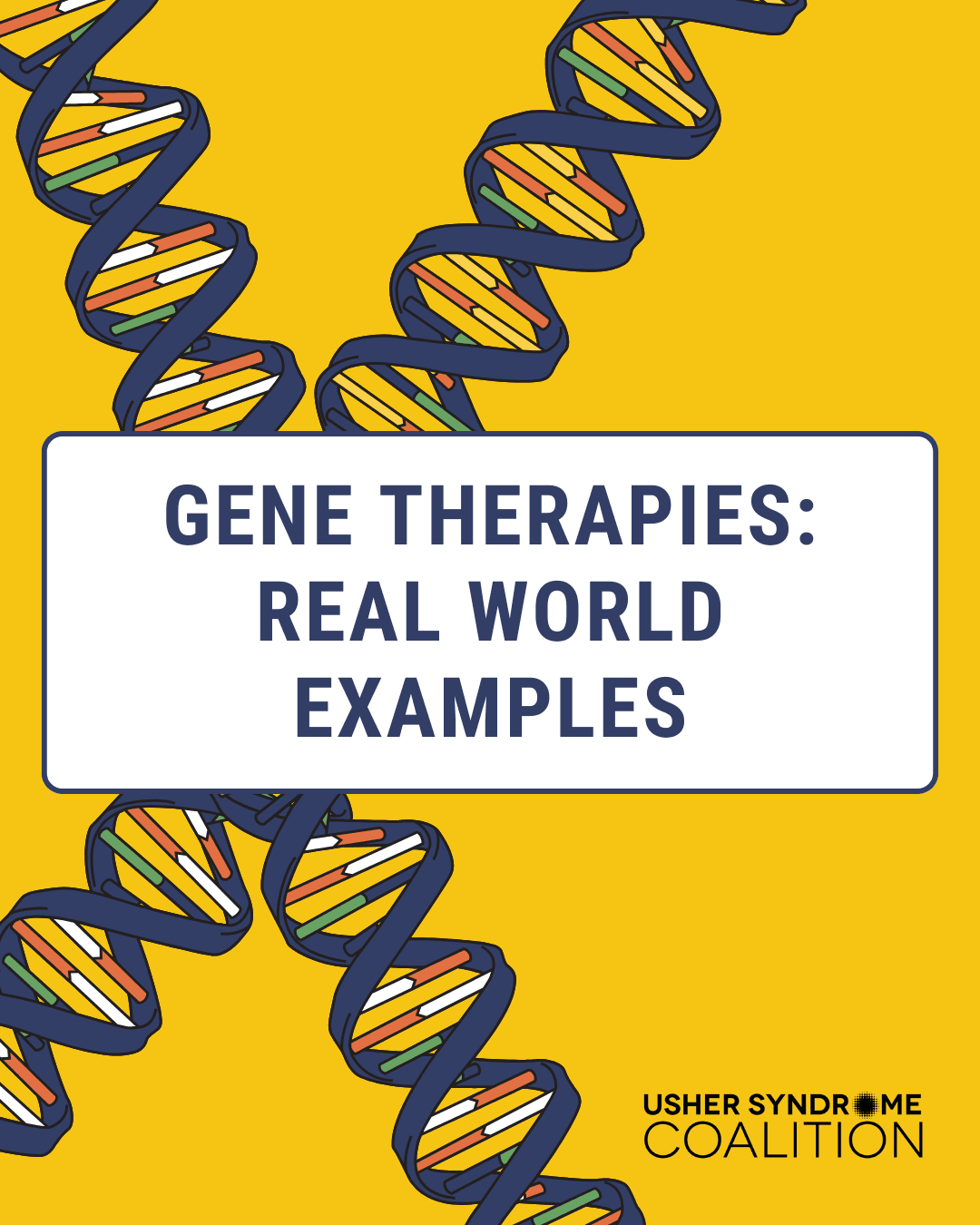
Blog Post 4 of 4: Gene Therapy Series
Now that you’ve learned about gene therapy—what it is, how it works, and how it’s given to patients—let’s look at some real-world examples!
Scientists are working on new gene therapies for Usher syndrome, including Type 1B (USH1B). This condition is caused by changes (mutations) in the MYO7A gene.
As you’ve learned, adeno-associated viruses (AAVs) are often used to carry working or healthy genes into cells. However, the MYO7A gene is too large to fit inside a single AAV. To solve this, scientists split the gene into two pieces, placing each part into a separate AAV in an approach called dual-AAV.
These AAVs are injected under the retina, the part of the eye that helps us see. The AAVs travel to special cells called photoreceptors. When these cells take in the AAVs, the two pieces of the MYO7A gene come together inside the cell to form a complete, working gene. This new gene helps the cell make MYO7A protein, which is needed for the photoreceptors to work correctly. Without this protein, the cells start to die, causing vision loss.
AAVantgarde Bio and Atsena Therapeutics are both developing gene therapies for USH1B using this dual-AAV approach to replace the non-working MYO7A gene with a working one.
AAVantgarde Bio’s LUCE-1 study is in Phase 1/2. Their first patient was treated in September 2024, and early results have been promising. They are currently recruiting more patients! More info can be found here: LUCE-1 Clinical Trial.
Atsena Therapeutics’ USH1B program is still in the preclinical stage. This means they are still testing their potential therapy (ATSN-301) in the lab to check for safety and effectiveness. It is not yet ready for human trials, but it may be in the future.
These studies give hope to people with USH1B and all individuals with Usher syndrome, as this gene therapy approach can be applied to other USH genes. As scientists continue their research, we will keep you updated!


